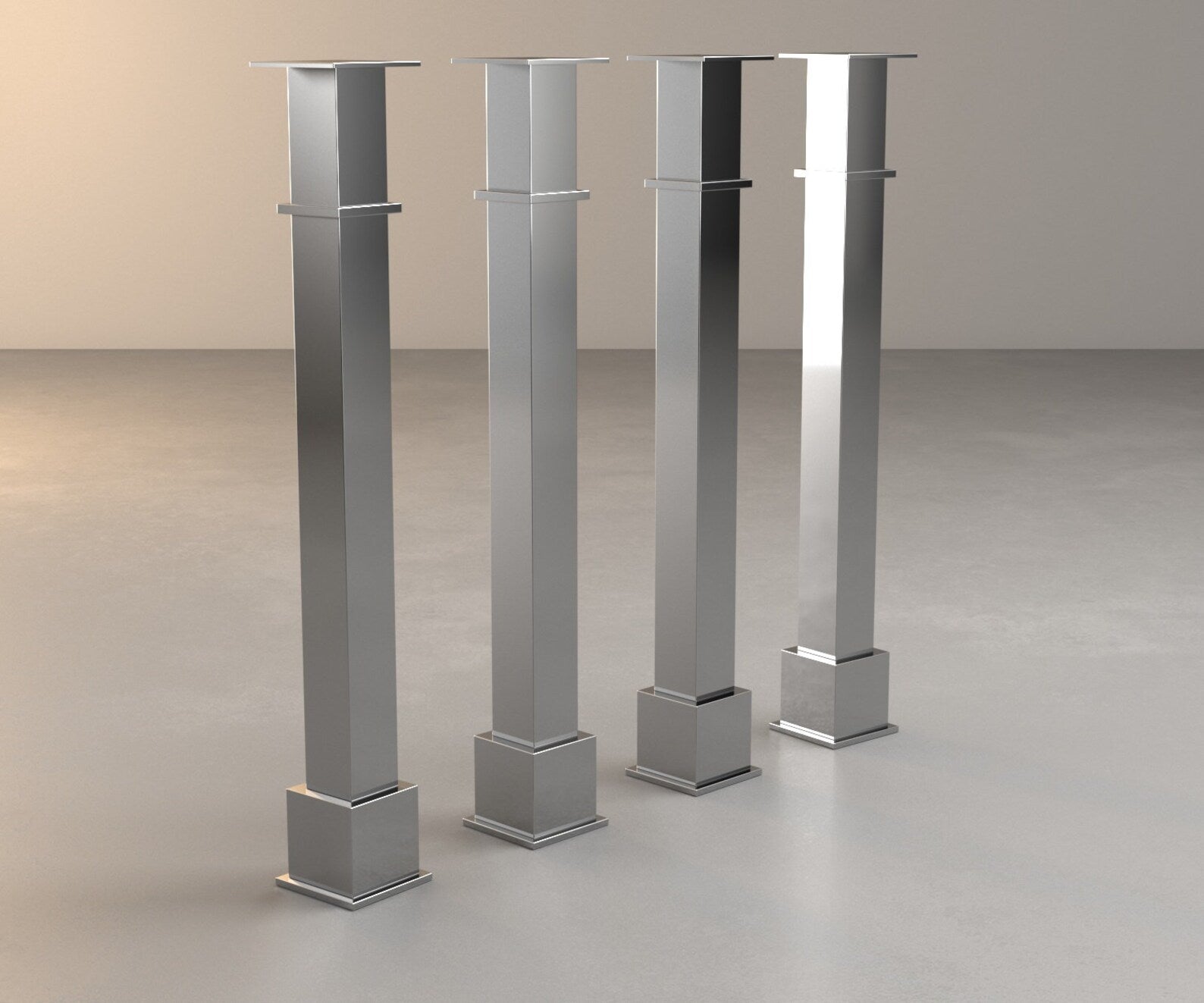Make Best Use Of Adaptability with Adjustable Legs For Kitchen Island Attributes
Make Best Use Of Adaptability with Adjustable Legs For Kitchen Island Attributes
Blog Article
Essential Variables to Consider When Choosing Legs For Cooking Area Island
Selecting the suitable legs for a kitchen area island includes a cautious analysis of multiple aspects that can dramatically affect both performance and aesthetic charm. As we discover these aspects, it becomes clear that each choice can have far-ranging effects for the general kitchen experience.
Product Options
When selecting legs for a kitchen island, comprehending the numerous material choices is essential for achieving both aesthetic allure and structural stability (Legs For Kitchen Island). The selection of product dramatically influences not just the durability of the island but additionally its total design and performance
Steel legs, frequently made from stainless steel or functioned iron, add a modern and commercial feeling while making sure sturdiness and stability. These materials are immune to use and can support significant weight, making them perfect for larger islands.
Another choice is crafted products, like MDF or plywood, which can be a lot more economical while still using a series of coatings. However, they might not provide the same level of stability as strong timber or metal. Last but not least, materials such as acrylic or glass can create a modern look, though they might call for extra support to guarantee stability.
Eventually, the option of product for kitchen area island legs must line up with the desired capability and the total theme of the kitchen.
Style and Layout

When thinking about design, the shape and surface of the legs are crucial. Tapered legs can provide a feeling of agility and beauty, while thicker, a lot more robust legs can convey toughness and security. Additionally, the surface-- be it painted, discolored, or all-natural-- must complement the kitchen cabinetry and kitchen counter materials to create a unified appearance.
Furthermore, the layout of the legs can also reflect individual taste. Personalized or attractive legs, such as those including detailed carvings or one-of-a-kind geometric forms, can work as centerpieces, including character and character to the kitchen area. Ultimately, the right option will not only improve performance however additionally boost the aesthetic allure, making the kitchen island a standout feature of the home.
Elevation Factors To Consider
Selecting the proper height for kitchen island legs is vital, as it straight impacts both performance and convenience. The typical height for a cooking area island usually ranges from 36 to 42 inches, straightening with usual countertop elevations. A 36-inch elevation is excellent for food preparation and cooking, enabling comfortable use of cooking area appliances and tools. Alternatively, a height of 42 inches is commonly preferred for islands meant for bar seating, fitting taller stools and providing an informal dining experience.

It is likewise important to account for users' choices and heights. Tailoring the height can make sure a comfortable experience for all member of the family, making the kitchen island a much more useful and enjoyable room.
Weight Support
Ensuring sufficient weight support for cooking area island legs is important for both security and capability. The kitchen area island frequently serves numerous objectives, including cooking, eating, and added storage space, demanding a durable assistance framework. When selecting legs, it is essential to think about the total weight ability needed based upon the island's planned use and the products that will certainly be positioned on it.
The selection of material for the legs plays a significant function in their weight-bearing abilities. Strong timber, steel, and heavy-duty composites typically offer remarkable stamina contrasted to lighter products. Furthermore, the style of the legs-- whether they are right, tapered, or have a pedestal type-- can affect their capability to distribute weight efficiently throughout the framework.
Always speak with the manufacturer's requirements pertaining to load limits to guarantee that the legs can sustain the intended weight without jeopardizing safety. In summary, picking kitchen island legs with adequate weight support is necessary for developing a risk-free and useful cooking space.
Installment and Upkeep
Proper setup and maintenance of kitchen area island legs are essential for making sure durability and stability. This often involves safeguarding the legs to the island base using proper bolts, making sure that the legs are degree and lined up.
As soon as installed, regular maintenance is necessary to protect the honesty and look of the legs - Legs For Kitchen Island. For wood legs, periodic cleaning with a moist cloth and application of suitable timber gloss can prevent wetness damages and keep their surface. Steel legs may need a mild cleaning remedy to get rid of oil and grime, followed by a completely dry towel to protect against corrosion development
Furthermore, examine the legs on a regular basis for indicators of wear or damage, such as fractures or loose joints. Tightening up screws or screws as needed can also lengthen the life expectancy of the legs. By adhering to these installation and upkeep techniques, house owners can make certain that their kitchen island stays durable and aesthetically appealing for years to find.
Conclusion

Visual coherence is vital in choosing the style and design of legs for a cooking area island, as these components substantially influence the general atmosphere of the room. Conical legs can give a sense of agility and beauty, while thicker, extra durable legs find out here can communicate strength and stability.Selecting the appropriate height for kitchen area island legs is vital, as it directly impacts both capability and convenience. In summary, choosing cooking area island legs with adequate weight support is important for producing a safe and functional cooking area.
In final thought, picking legs for a kitchen area island demands careful consideration of numerous factors, consisting of product options, design, elevation, weight support, and setup.
Report this page